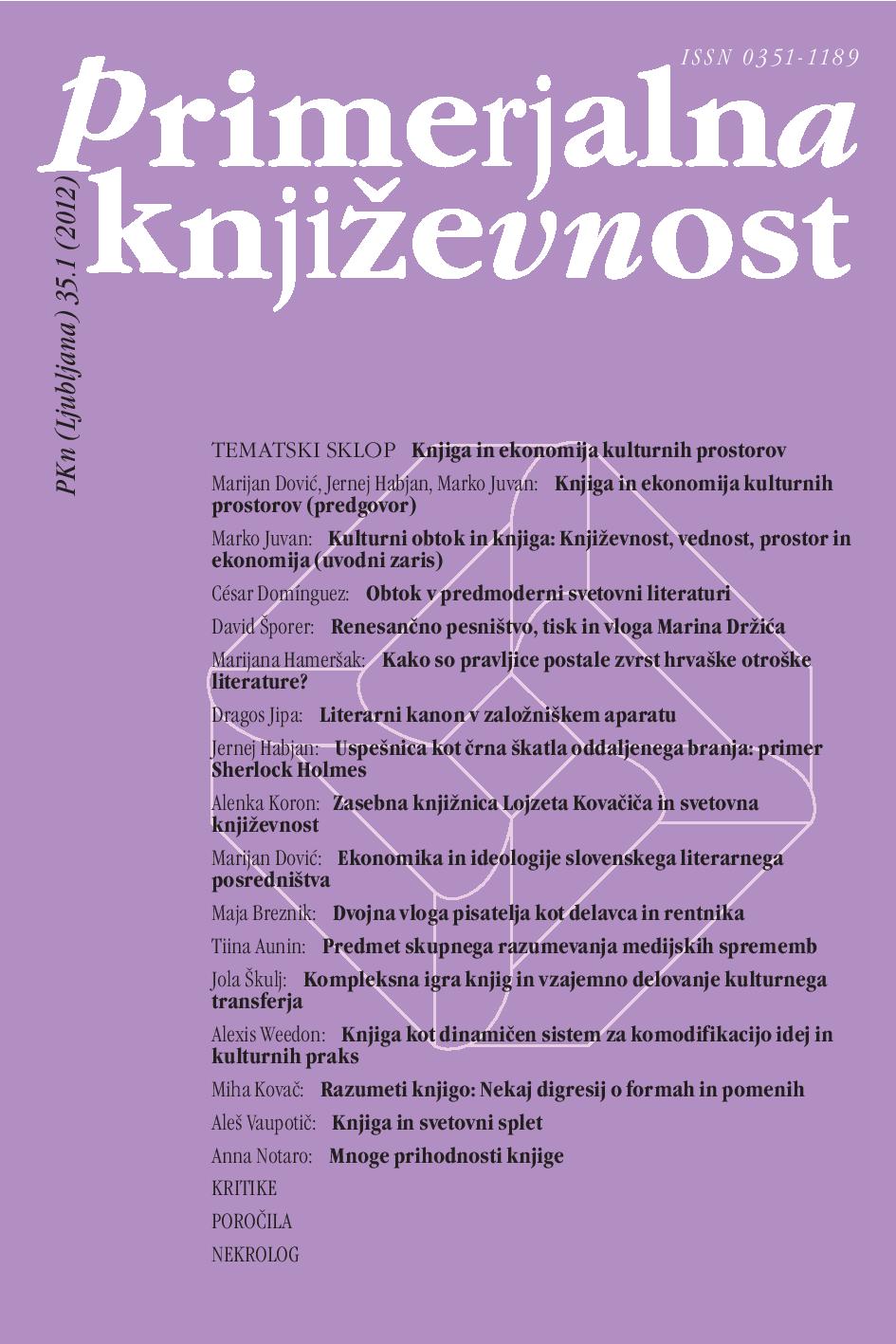The Book and the World Wide Web
Keywords:
Google books, internet, web communication, reference literature, computational reading, content management system, new media literature, cybertext, Spiller, TeoAbstract
The essay considers the effects of internet-based communication on the book as a carrier of a message. An examination of Teo Spiller’s “sonnet-like” web projects and of web archives such as the Stanford Encyclopedia of Philosophy shows which aspects of the book have changed or were improved in web-based communication forms, and which aspects are book-specific and thus retain their value in the Internet era.References
Bovcon, Narvika. “Pomenske mreže v arhivskih zbirkah – čas računalnikov in čas fotografije.” Dialogi 46.11–12 (2010): 24–45.
Flusser, Vilém. Kommunikologie weiter denken: Die Bochumer Vorlesungen. Frankfurt: Fischer, 2009.
Kay, Alan, and Adele Goldberg. “Personal Dynamic Media.” IEEE Computer 10.3 (1977). http://www.newmediareader.com/book_samples/nmr-26-kay.pdf (9 Mar 2012).
Manovich, Lev. The Language of New Media. Cambridge, MA: MIT P, 2001.
– – –. Software Takes Command. 2008. Available at: http://lab.softwarestudies.com/2008/11/softbook.html (9 Mar 2012).
Spiller, Teo. Besedilnost novih medijev: [verzija 1.0 s]. Ljubljana: Dober, zavod za sodobno umetnost, 2011.
Wakefield, Jane. “World Wakes Up to Digital Divide.” BBC (19 Mar 2010). Available at: http://news.bbc.co.uk/2/hi/technology/8568681.stm (12 Feb 2012).
Weibel, Peter. “Die postmediale Kondition.” Die Postmediale Kondition. Graz: Neue Galerie, 2005. Text partially available at: http://www.neuegalerie.steiermark.at/05/postmediale/konzept.html (9 Mar 2012).
Wortham, Jenna. “With Kinect Controller, Hackers Take Liberties.” The New York Times (21 Nov 2010). Available at: http://nyti.ms/cbPBjG (12 Feb 2012).


